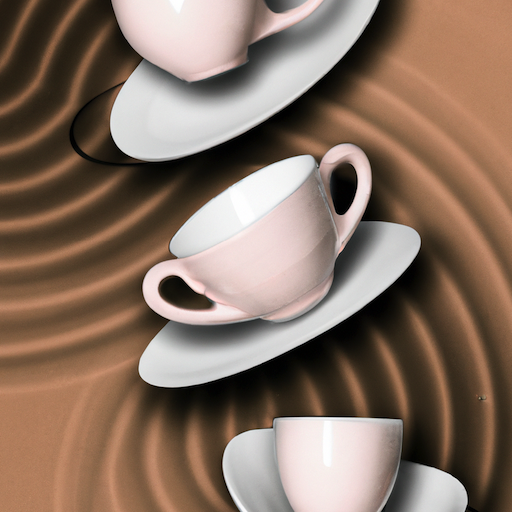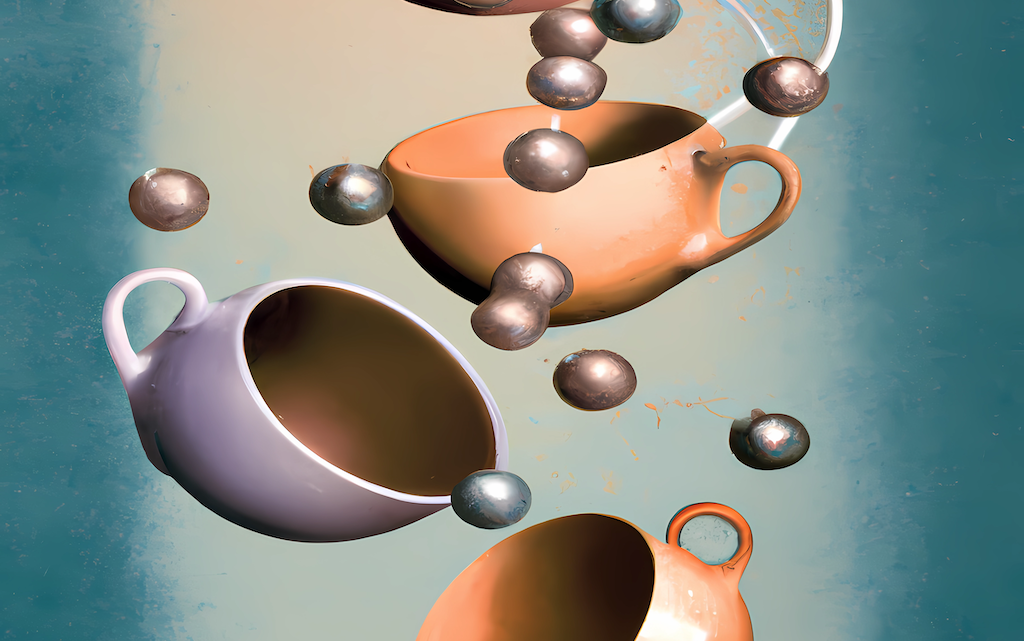The Art of Cupping: How to Taste and Evaluate Coffee
Unlocking the Secrets to Sensory Evaluation
Coffee, often hailed as the elixir of life, has a rich and diverse world waiting to be explored. From the moment the beans are cultivated to the final sip, every step in the process contributes to the intricate flavors and aromas that awaken our senses. To truly appreciate the nuances of coffee, one must delve into the art of cupping – a sensory evaluation technique that allows us to taste and evaluate the complex characteristics of this beloved beverage. In this comprehensive guide, we will explore the intricacies of cupping and unravel the secrets behind tasting and evaluating coffee like a seasoned connoisseur.

What is Cupping?
Unveiling the Ritual Behind the Beans
Cupping is an age-old practice used by coffee professionals to assess and analyze the sensory attributes of different coffee beans and roasts. This process involves carefully observing and evaluating the aroma, flavor, body, acidity, and aftertaste of coffee through a standardized method. Cupping serves as a universal language among coffee experts, enabling them to communicate and compare their experiences with precision.
The Equipment You’ll Need
Tools of the Trade for Cupping Mastery
To embark on your cupping journey, it’s essential to gather the necessary equipment. Here are the items you’ll need to conduct a successful cupping session:
- Coffee Beans: Choose a variety of high-quality coffee beans from different origins and roasts to explore the diverse flavors.
- Grinder: Invest in a burr grinder to ensure consistent particle size, allowing for a more accurate and controlled extraction during brewing.
- Scale: Accurate measurements are crucial in cupping. A digital scale with a precision of 0.1 grams will be your trusty companion.
- Hot Water Kettle: Opt for a kettle with a gooseneck spout to maintain control while pouring water.
- Cups: Use specialized cupping bowls with standardized dimensions to ensure consistency in evaluating multiple coffees.
- Spoons: Long-handled, cupping-specific spoons are designed to facilitate slurping and proper evaluation of the coffee.
- Cupping Form: A cupping form or scorecard will help you record your observations and make meaningful comparisons.
The Art of Cupping: Step-by-Step Guide
Mastering the Technique to Unleash Flavor Profiling
Cupping is a multi-step process that involves meticulous attention to detail. Let’s dive into each step and understand the purpose it serves in unraveling the complexities of coffee tasting and evaluation.
Step 1: Grinding the Beans
Before diving into the tasting process, start by grinding the coffee beans. Grind each sample just before cupping to preserve the flavors and aromas. A medium grind size is generally recommended for cupping, allowing for optimal extraction and perception of flavors.
Step 2: Smelling the Aromas
The aroma of coffee is an essential aspect of the sensory experience. Take a moment to inhale the fragrance of the dry grounds. Note any distinct scents, such as fruity, floral, chocolatey, or nutty aromas. This initial assessment provides a glimpse into the potential flavor profiles of the coffee.
Step 3: Brewing the Coffee
With the aromas assessed, it’s time to brew the coffee. Add freshly boiled water to the ground coffee in each cupping bowl, ensuring a coffee-to-water ratio of 1:16 (10 grams of coffee for 160 grams of water). Allow the coffee to steep for around four minutes.
Step 4: Breaking the Crust
After the coffee has steeped, use a spoon
to gently break the crust that forms on the surface. Take a deep breath and inhale the captivating aromas released during this process. The fragrance will be more intense than the initial dry aroma, offering further insight into the coffee’s potential flavor profile.
Step 5: Assessing the Flavor
Now comes the moment you’ve been waiting for – tasting the coffee. With a cupping spoon, take a small sip from each cupping bowl. Allow the coffee to coat your entire palate, exploring the flavor profiles and discerning the nuances. Note the taste characteristics, such as acidity, sweetness, bitterness, and any specific flavor notes you detect.
Step 6: Evaluating the Body
The body of coffee refers to its weight and mouthfeel. Assess how the coffee feels on your tongue and its viscosity. Is it light-bodied, medium-bodied, or full-bodied? Note these observations to understand the overall texture and richness of the coffee.
Step 7: Examining the Acidity
Acidity is a key component that contributes to the overall flavor balance of coffee. Determine the level of acidity in each cupping bowl. Is it bright and vibrant or more subdued? Acidity can range from citrusy and tangy to mellow and balanced, adding depth and complexity to the coffee’s character.
Step 8: Analyzing the Aftertaste
The lingering flavors that remain after swallowing the coffee are referred to as the aftertaste. Pay attention to the aftertaste and note the duration and quality of the flavors. Does it leave a pleasant, lingering sweetness, or is it characterized by a bitter or astringent finish? The aftertaste offers valuable insights into the overall quality and flavor profile of the coffee.
FAQs (Frequently Asked Questions)
Q: What is the purpose of cupping coffee?
Cupping allows for the sensory evaluation of coffee, enabling professionals and enthusiasts to assess the quality, flavor, and characteristics of different beans and roasts. It serves as a universal language among coffee experts, facilitating communication and comparison.
Q: How do I develop my palate for tasting coffee?
Developing a refined palate takes time and practice. Engage in regular cupping sessions, tasting a variety of coffees from different origins and processing methods. Focus on identifying flavor notes and understanding the nuances. Experiment with different brewing methods and take note of how they affect the taste.
Q: Can cupping be done at home?
Absolutely! Cupping is an accessible and rewarding practice that can be done in the comfort of your own home. Simply gather the necessary equipment, select a range of coffees to sample, and follow the step-by-step process outlined in this guide.
Q: What is the ideal coffee-to-water ratio for cupping?
The standard coffee-to-water ratio for cupping is 1:16. This means using 10 grams of coffee for every 160 grams of water. Adhering to this ratio ensures consistency and allows for accurate evaluation of the coffee’s flavors and characteristics.
Q: Are there any specific cupping forms or scorecards available?
Yes, several cupping forms and scorecards are available for free online. These forms help you record your observations, make comparisons, and maintain a systematic approach to cupping. Look for reputable sources or coffee organizations that provide standardized cupping forms.
Q: How can I improve my cupping skills?
Improving your cupping skills requires continuous learning and exploration. Engage with the coffee community, attend cupping workshops or courses, and seek feedback from experienced cuppers. Practice regularly and challenge yourself to identify more nuanced flavors and characteristics.
Embarking on the journey of cupping opens up a world of discovery, enabling you to unlock the hidden flavors and intricacies of coffee. By following the step-by-step guide outlined in this article, you can enhance your ability to taste and evaluate coffee like a true connoisseur. Remember, cupping is not only a technique but an art form that requires practice, patience, and a keen sense of observation. So, grab your cupping spoons, gather an array of coffee beans, and immerse yourself in the art of cupping. Your palate will thank you for it.

